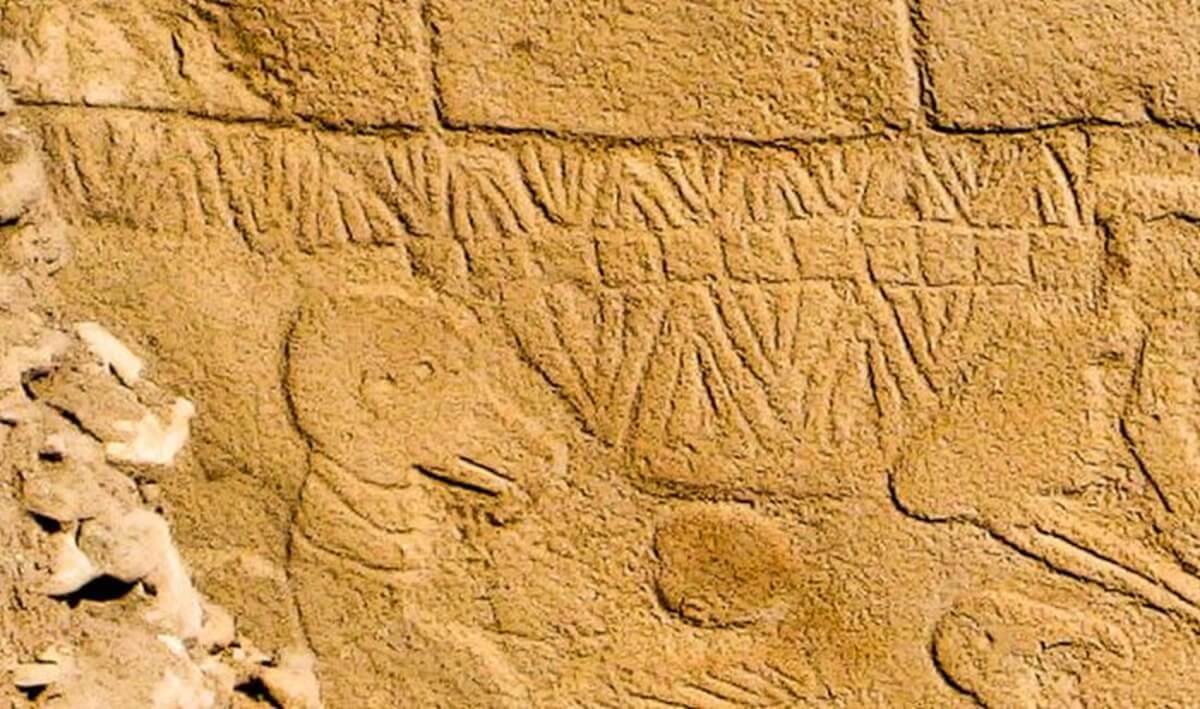Carvings at Göbekli Tepe are thought to represent the world’s oldest calendar. (Credit: Dr. Martin Sweatman)
EDINBURGH, Scotland — Researchers have uncovered what might be the world’s oldest solar calendar at Göbekli Tepe, a 12,000-year-old archaeological site in southern Turkey. This ancient timekeeping system, etched into stone pillars, could be more than just a way to track the seasons – it might also serve as a memorial to a catastrophic comet strike that changed the course of human history.
Göbekli Tepe, often called the world’s first temple, has long fascinated archaeologists with its massive stone pillars adorned with intricate carvings. The temple dates back to around 10,000 BCE, predating the invention of writing by thousands of years. Its builders were thought to be hunter-gatherers, yet they somehow managed to construct massive stone circles with pillars weighing up to 20 tons.
The site’s purpose has long puzzled archaeologists, but this fresh analysis of these mysterious symbols, published in the journal Time and Mind, suggests an unexpected purpose: a sophisticated calendar that tracked both lunar and solar cycles.
“It appears the inhabitants of Göbekli Tepe were keen observers of the sky, which is to be expected given their world had been devastated by a comet strike,” says Dr. Martin Sweatman from the University of Edinburgh’s School of Engineering, who led the research, in a media release.

So, what exactly did these ancient sky-watchers see, and how did they record it?
The key lies in V-shaped symbols carved into the pillars. One pillar, known as Pillar 43, seems to be particularly significant. Sweatman interprets each “V” to represent a single day, allowing his team to count a full solar year of 365 days on this pillar alone. This calendar consists of 12 lunar months, plus the additional 11 days to align with the solar year – a system known as a lunisolar calendar. This concept of intercalation, or adding days to keep a calendar in sync with the seasons, was previously thought to have originated much later in history.
What makes this discovery truly remarkable is its age. If confirmed, this calendar predates other known lunisolar calendars by thousands of years, pushing back our understanding of ancient timekeeping and astronomical knowledge.
The summer solstice, the longest day of the year, seems to have held special significance for the people of Göbekli Tepe. They marked this important day with a unique symbol: a “V” worn around the neck of a bird-like creature, thought to represent the constellation visible during the summer solstice at that time.
Göbekli Tepe’s location and age place it at a crucial juncture in human history – right at the transition between the Paleolithic (Old Stone Age) and Neolithic (New Stone Age) periods. This was a time of immense change, as humans began to settle in permanent communities and develop agriculture. The presence of such an advanced timekeeping system at this pivotal moment suggests that astronomical knowledge may have played a crucial role in this transition.

Why create such an elaborate calendar?
The researchers believe it may be connected to a cataclysmic event that occurred nearly 13,000 years ago – around 10,850 BC. Evidence suggests that Earth was struck by a swarm of comet fragments, triggering a “mini ice age” that lasted over 1,200 years.
This cosmic impact had far-reaching consequences. Many large animal species were wiped out, forcing human populations to adapt. Some scientists theorize that these changes may have spurred the development of agriculture and more complex societies – key steps in the birth of civilization as we know it.
“This event might have triggered civilization by initiating a new religion and by motivating developments in agriculture to cope with the cold climate. Possibly, their attempts to record what they saw are the first steps towards the development of writing millennia later,” Dr. Sweatman explains.
The stone carvings at Göbekli Tepe may have served as both a practical tool and a spiritual touchstone. One pillar appears to depict the Taurid meteor stream – believed to be the source of the comet fragments – lasting 27 days and originating from the area of the sky we now associate with the constellations Aquarius and Pisces.
These celestial observations remained important to the people of Göbekli Tepe for thousands of years, suggesting that the comet strike may have given rise to new religious or cultural practices that influenced the development of civilization in the region.
Perhaps most intriguingly, the discovery indicates that ancient people understood and could record a complex astronomical phenomenon called precession – the gradual shift in Earth’s rotational axis that affects how we see constellations move across the sky. This knowledge was thought to have been first documented by the Greek astronomer Hipparchus in 150 BC, but the Göbekli Tepe calendar pushes that date back by at least 10,000 years.
If correct, this theory paints a picture of our ancestors as far more sophisticated than previously imagined. It suggests they were capable of precisely recording cosmic events, tracking complex celestial cycles, and passing this knowledge down through generations – all without the benefit of written language.
Paper Summary
Methodology
Sweatman’s research primarily involved careful analysis of the symbols and structures at Göbekli Tepe and related sites. He examined the placement and frequency of V-symbols, animal carvings, and other markings, interpreting them through the lens of archaeoastronomy – the study of how ancient cultures understood and used celestial phenomena. He also compared these symbols to later astronomical systems from cultures in the region, looking for continuities and similarities.
Results
The study found that the arrangement of symbols at Göbekli Tepe is consistent with a sophisticated lunisolar calendar system. This system appears to use 11 epagomenal days to reconcile the lunar and solar years. Sweatman also identified potential representations of constellations and a possible encoding of the date of the Younger Dryas impact event.
Limitations
The primary limitation of this study is its reliance on interpretation of ancient symbols, which can be subjective. Without written records from the time, it’s impossible to know for certain what the builders of Göbekli Tepe intended these symbols to mean. Additionally, the study’s conclusions about links to later cultures and the Younger Dryas impact remain speculative and require further evidence to confirm.
Discussion and Takeaways
If confirmed, this research would significantly change our understanding of prehistoric human capabilities. It suggests that complex astronomical knowledge and timekeeping systems predated agriculture and writing by thousands of years. This, in turn, could influence theories about the development of early civilizations and the role of astronomy in human cognitive evolution. The study also highlights the potential importance of cosmic events, like the proposed Younger Dryas impact, in shaping human culture and technology.
Funding and Disclosures
The paper does not explicitly mention funding sources. The author, Martin B. Sweatman, is affiliated with the School of Engineering at the University of Edinburgh. The paper discloses that Sweatman is the author of a popular book related to this topic.


